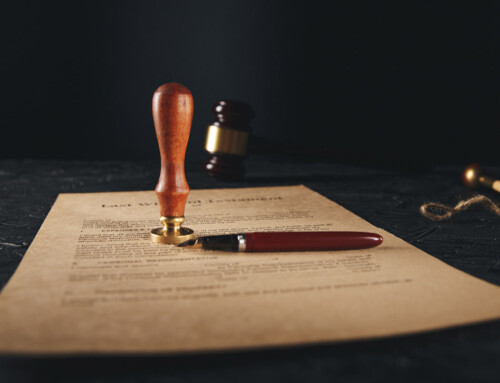Contents
Redacted Documents in Law: What They Are and Why They Matter
In legal contexts, redaction refers to concealing or removing sensitive information from documents before they are shared or filed publicly. This is done to protect confidential, personal, or classified data. When someone asks, “What does redacted mean in court?” It typically refers to content in court filings or legal records that have been obscured—often with black bars—so that the protected information remains hidden from unauthorized viewers.
A redacted document is one that has been edited to obscure certain content for legal or privacy reasons. This allows the rest of the document to be accessed or distributed without compromising confidentiality. In contrast, a document that is not redacted contains all original information and may inadvertently expose private or privileged material. Therefore, ensuring that sensitive information is properly redacted is crucial in legal document preparation and public disclosures.
What Is Redaction in Legal Contexts?
In legal contexts, redaction means editing a document to obscure specific confidential parts of the text before publication or disclosure. This could involve blacking out names, addresses, account numbers, or entire paragraphs – any content that should not be revealed to unauthorized readers. Redaction is a deliberate process to ensure the removed information cannot be easily recovered or read. Modern software is often used to permanently delete sensitive text, not just hide it with a black box. This prevents someone from copying and pasting or otherwise uncovering the hidden content.
Key facts about redaction are including:
- It is targeted editing of a document that removes or hides confidential information while leaving the rest of the text available.
- The goal is to balance transparency with privacy, allowing vital information to be shared publicly or with other parties but shielding sensitive details.
- Proper redaction removes the data (for example, deleting the text or overwriting it in the file) rather than obscuring it visually. This ensures that confidential information cannot be retrieved through technical means.
Redaction is common in court filings, government records, and released documents. For instance, if a court document contains a person’s Social Security number or the name of a minor, those parts will be redacted before the document becomes public. This practice is often required by law or court rules. In U.S. federal courts, for example, attorneys must redact specific personal data (all but the last four digits of SSNs or account numbers, minors’ names, etc.) in public filings. By doing so, legal professionals comply with privacy laws and protect individuals’ rights.

Why Is Redaction Used in Legal Documents?
Redaction is used whenever a document needs to be shared or published without disclosing specific sensitive information. There are many legitimate reasons for this in law:
- Protecting Personal Privacy: Legal documents often contain personal identifying information (addresses, birth dates, phone numbers, financial account numbers). Redacting these details prevents identity theft and shields individuals’ privacy. For example, the names of minor children are usually redacted (or replaced with initials) in court records to protect the minors’ identity.
- Confidential and Privileged Information: Attorneys may redact content protected by attorney-client privilege or other legal privileges. This ensures that privileged legal advice or strategy is not revealed if the document is produced in litigation. Similarly, a public court filing might redact trade secrets or proprietary business information to maintain confidentiality.
- Sensitive Law Enforcement or National Security Details: Information might be redacted in criminal cases or government documents to avoid harming ongoing investigations or compromising security. For instance, the names of undercover agents, informants, or intelligence sources are often blacked out.
- Legal Compliance and Open Records: When government agencies release documents under transparency laws like the Freedom of Information Act (FOIA), they are permitted (sometimes required) to redact certain exempt information. FOIA has specific exemptions for personal privacy, law enforcement sensitive data, and national security. Redaction allows the agency to release the document while withholding only the exempt portions. This way, the public can access the disclosable information without exposing protected details.
- Court Orders and Publication Bans: Sometimes, a court orders specific information to be kept secret for fair trial rights or other reasons. Rather than sealing an entire document, a judge may direct the parties to file a public version with redactions. This is common if only a portion of the text is sensitive. It ensures the rest of the document remains open to the public record.
The importance of redaction lies in its ability to uphold confidentiality without completely blocking access to information. By selectively removing only necessary, redaction supports transparency in the justice system and government. It lets the public and press see documents and understand proceedings while protecting vulnerable parties and secrets. If redaction were not used, officials might resort to sealing whole documents or withholding them entirely, resulting in less public information. Redaction provides a middle ground that preserves both privacy and the public interest.
How Is Redaction Applied?
In the past, redaction was done by physically cutting out text or using black ink to cover lines on paper. Today, it is usually done with digital tools that can permanently remove text from electronic files. When a PDF or Word document is redacted properly, the sensitive text is deleted or masked in the file data. All one sees is a black bar or blank space where the content used to be.
Modern redaction software ensures that even metadata (hidden data like comments or previous revisions) is cleared out so nothing can be accidentally revealed. This is crucial in the digital age – there have been cases where poorly applied redactions were reversible, leading to serious information leaks. Embarrassing redaction failures have made headlines when someone copied and pasted blacked-out text into a new document and the secret text appeared. For example, in a 2019 incident, lawyers for Paul Manafort filed a document with supposed redactions that were improperly done, inadvertently exposing confidential details to the public. Such cases underscore why using proper tools and techniques is essential when redacting.
When done correctly, a redacted document typically indicates the removal by showing a black bar or shaded box in place of the text. This visual cue tells readers that information has been intentionally removed. In court filings, attorneys might also label why something is redacted (e.g. “redacted – contains trade secret” or referencing a court order) to clarify the omission’s justification.
Examples of Redaction in Action
To better understand redaction, it helps to look at a few notable examples and scenarios where redaction is used:
- Government Investigation Reports: The Mueller Report (2019) on Russian election interference is a well-known example. When the report was released to the public, numerous passages were redacted. The U.S. Attorney General explained that those redactions fell into specific categories: protecting secret grand jury information, not compromising ongoing investigations, safeguarding classified national security material, and respecting personal privacy. The result was a report that the public could read, but with sensitive details blacked out under those four categories.
- Court Filings with Personal Data: In many ordinary court cases, redactions hide things like Social Security numbers or financial account numbers. For example, bankruptcy filings or civil lawsuits might show account balances, but the account numbers appear as XXXX-1234 (only the last few digits visible). This allows the document to be public without exposing someone’s full financial details.
- FOIA Document Releases: Journalists and researchers often receive documents via FOIA that are full of redacted blocks. A classic scenario is obtaining FBI or CIA files: the released pages might have entire paragraphs or pages blacked out under national security or law enforcement exemptions. While sometimes frustrating, these redactions are done under legal standards – for instance, removing names of agents or informants, or redacting techniques that are classified. The alternative would be for the agency to refuse to release the document, so redaction is a legal way to release partial information.
- Civil Litigation and Trade Secrets: In corporate lawsuits, if a filed exhibit contains a company’s secret formula or customer list, the public version of that filing will have those portions redacted. This respects confidential business information. The judge and the parties might have access to the unredacted version under seal, but the publicly available version hides the sensitive data. This ensures businesses can litigate disputes without accidentally publishing their proprietary information for competitors to see.
Each of these examples shows redaction as a tool to enable disclosure of documents that otherwise might be entirely withheld. Courts and officials can release the rest by selectively obscuring only the risky parts.
Redaction vs. Censorship and Other Information Controls
It is essential to distinguish redaction from other methods of restricting information, such as censorship or sealing of records:
- Redaction vs. Censorship: The term “censorship” generally implies suppressing or hiding information because it is considered objectionable, sensitive, or inconvenient by some authority (often for political or moral reasons). Censorship usually carries a negative connotation, suggesting an attempt to control or silence content. Conversely, redaction is a neutral legal practice focused on protecting specific information within a document for privacy or security reasons. One journalist put it this way: a censor seeks to withhold information deemed dangerous or inappropriate to disclose publicly, whereas a redactor removes information for legal confidentiality reasons. For example, removing profanity from a book would be censorship; blacking out a victim’s name from a public court decision is a redaction. Redaction is often mandated by law or policy, and the motivations (protect privacy, national security, etc.) are typically transparent and justifiable – unlike censorship, which might aim to influence opinion or hide misconduct.
- Redaction vs. Sealing: In legal proceedings, sealing a document means making the entire document (or a large portion) inaccessible to the public. A sealed record is not available for public viewing unless a court later unseals it. Redaction is much more limited: it obscures individual information within an otherwise public document. For instance, if a court file is mostly public but contains a few sensitive lines, those lines can be redacted, and the rest can be filed openly. Sealing would be used if the whole document needed to be kept secret. Courts prefer redacting over sealing, whenever possible, to maintain openness. Some jurisdictions explicitly define the two: “Redact” means to obscure individual information items within an otherwise publicly accessible document, whereas “seal” means to order that a portion of a document or the entire document is not accessible to the public. In short, sealing withholds more information than redaction.
- Classified Information or Gag Orders: Another form of information control is when documents are classified (in government/military contexts) or when gag orders or protective orders prevent certain information from being disclosed. Redaction can be seen as a way to sanitize a classified document for public release – declassifying it in part by blacking out what must remain secret. Unlike broad censorship, this is a precise surgical removal to release the non-sensitive parts.
By understanding these differences, one can appreciate that redaction is a legitimate and routine legal practice, not an arbitrary suppression of information. It leaves a visible trace (you know something was removed, and often the reason is indicated), whereas censorship might remove content without acknowledgement. Redaction is about following laws and court rules to protect people and sensitive matters while providing as much information as possible.
Final Thoughts
Redaction stands as a vital safeguard in the legal world, balancing the competing demands of privacy, transparency, and justice. Far from being an act of secrecy or censorship, it is a responsible and often legally mandated step that allows sensitive documents to be shared without compromising individual rights, security, or privileged information. Whether used to protect minors’ identities in court records, shield national security interests in government disclosures, or secure trade secrets in business litigation, redaction enables access without exposure.
Understanding what does redacted mean in court is essential to appreciating its role. A redacted document is one where specific content has been deliberately removed or obscured, typically with black bars or blank spaces, to protect sensitive or confidential information. In contrast, a document that is not redacted may inadvertently expose private data, leading to potential breaches of privacy or legal noncompliance.
In today’s digital age, the precision and permanence of redaction are more important than ever. A single oversight—such as failing to remove metadata or relying on superficial visual masking—can lead to serious consequences, including data breaches or unintended public disclosure. This highlights the necessity for legal professionals to use proper tools and methods to ensure redactions are done correctly and irreversibly.
Ultimately, redaction is not about concealing the truth—it is about sharing the truth responsibly. By understanding its purpose, process, and practical applications, we can better appreciate how this legal tool supports open justice while safeguarding what must remain private.
Transform Your Legal Practice with Smarter Solutions
Managing a law firm requires more than legal expertise—it demands efficiency, organization, and seamless client communication. RunSensible provides an all-in-one solution to streamline case management, automate administrative tasks, and enhance team collaboration. With features like legal calendaring, client intake automation, document management, and e-signature capabilities, you can focus on what truly matters: delivering exceptional legal services.
Stay ahead in a competitive legal landscape by adopting a system that improves productivity while reducing stress. Whether you are looking to strengthen lawyer well-being, improve workflow efficiency, or enhance client relationships, RunSensible equips your firm with the tools to succeed. Experience the difference a modern, fully integrated legal practice management system can make.
FAQs
1. How is redaction performed?
Redaction can be performed either manually or digitally. Manual redaction involves using black ink or opaque tape to obscure sensitive information on physical paper copies. Digital redaction, on the other hand, uses specialized software designed to permanently remove text, metadata, and visual data from electronic documents such as PDFs and Word files.
2. What are the legal risks of improper redaction?
Improper redaction can result in serious consequences, including legal liability for exposing confidential or privileged information, sanctions imposed by courts or regulatory authorities, and significant reputational damage to the law firm or institution involved. Additionally, mishandling redacted evidence can lead to case dismissals or appeals, potentially jeopardizing the outcome of legal proceedings.
3. Are there tools designed explicitly for redacting legal documents?
Yes, there are many tools tailored for legal redaction, offering features explicitly designed for the needs of law firms and legal professionals. Popular options include Adobe Acrobat Pro, CaseGuard Studio, Redact-It, and iDox.ai. In addition, some legal practice management software comes equipped with built-in redaction features, allowing users to securely and efficiently redact sensitive information directly within their workflow.
4. Can redacted information ever be recovered?
If done improperly, such as using black boxes or image overlays, redacted information may still be retrievable through copying, highlighting, or accessing file metadata. This is why accurate redaction requires permanent content removal from the document source.
5. What’s the difference between redaction and anonymization?
Redaction involves removing or concealing specific pieces of sensitive information, often to protect confidentiality or comply with legal obligations. In contrast, anonymization eliminates all identifying data to ensure that individuals cannot be re-identified. While redaction is a selective process commonly used in legal contexts to withhold particular details, anonymization is broader in scope. It is typically applied in data protection and research settings to ensure complete privacy.
References
1. https://www.jdsupra.com/legalnews/sensitive-information-how-to-properly-1389487/
2. https://www.law.cornell.edu/wex/redaction
4. https://www.foia.gov/foia-statute.html
5. https://www.cjr.org/language_corner/redacted-censored-mueller-report.php
Disclaimer: The content provided on this blog is for informational purposes only and does not constitute legal, financial, or professional advice.






